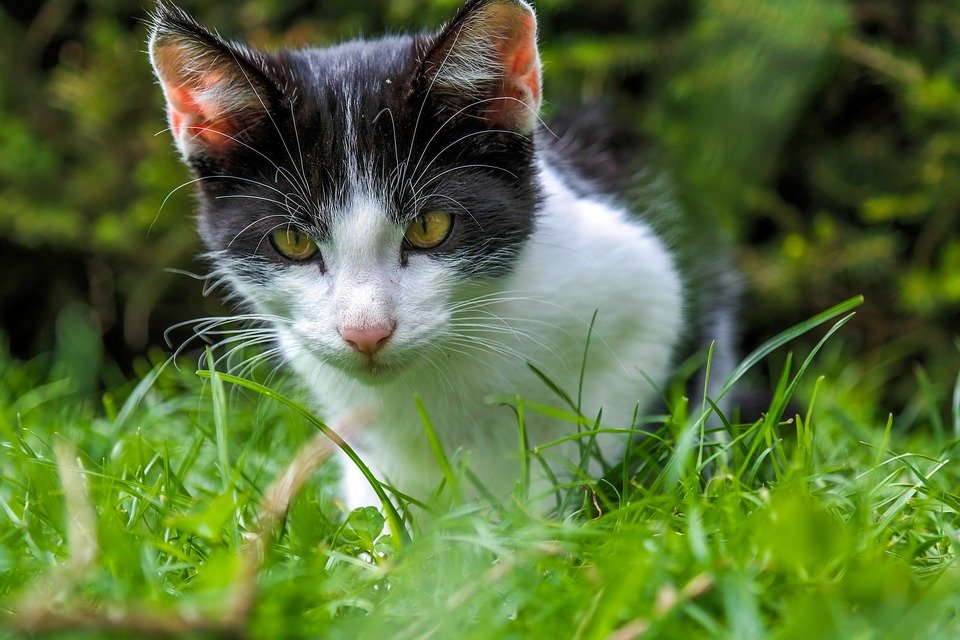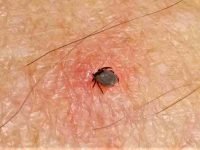This post contains affiliate links. If you click on a link and make a purchase I earn a commission at no extra cost for you.
A tick infestation in a cat is not only dangerous to your pet, but also to you as the cat owner. Cats like resting in people’s laps, sleep on the couch, or even in bed. This makes it very easy for ticks to spread in a home. Cats can pass on a disease called Bartonellosis to humans through ticks.
There is also a risk of infection with Lyme disease if these ticks are carriers. Using the best tick repellent for cats is the best prevention and much easier than treating tick infestation or curing a tick-borne disease.
Tick Repellents for Cats
There are chemically synthesized tick repellants or natural products based on essential oils obtained from plants. Of both, there are many products that are suitable for cats. While natural ways to repel ticks on cats have fewer unwanted side effects, they are by no means as effective as chemical tick repellents.
No products found.
How do they work?
Tick Repellent for cats contains one or more different active ingredients that also work in different ways, whether they are repellents or pesticides. After the external application, the active substances usually spread through the fur and skin.
Repellents have a repelling effect, creating an unpleasant smell or cloaking the cat under such a smell, making it difficult for the tick to find or to remain on its host.
Pesticides don’t just keep ticks away, they are toxic for ticks and ensure that the ectoparasites die soon after they come into contact with treated fur or skin.
In addition to the different modes of action, there are also various forms of application.
How to Apply Tick Repellents For Cats
- Spot on – once a month topicals, chemical repellents: These are easy to use, are very effective, and have long-lasting effects. A couple of drops are applied in the neck area, active ingredients slowly spread over fur and skin, acting against ticks, fleas, and other external parasites. Common ingredients used in topicals include Fipronil, Methoprene, and Etofenprox.
- Sprays – Tick repellent sprays come in pressurized aerosol bottles or pump bottles. For cats, pump bottles are preferred instead of aerosols which the cat can mistake as the hiss of another cat. Do not spray on the face but spray onto a cloth and use it to daub the cat. Reapply at the recommended intervals, to maintain permanent protection.
- Collars – Neck collars containing repellent keep ticks away from favorite hiding places like the nape, back of the ears, and the neck’s underside.
Chemical or Natural, what is the best tick repellent for cats?
Whether you use a natural or chemical tick repellent for cats requires weighing up the pros and cons. Take into account the occurrence of ticks in your area and to what percentage the ticks are contaminated with pathogens. As a pet owner, you need to consider whether the risk of side effects is greater than the risk of tick-borne disease. Many of the natural remedies have some effectiveness but are not nearly as effective as a synthetic repellent.
Natural Tick Repellents
The active ingredients of chemical repellents can accumulate in the pet’s body. It is important that they are used exactly as directed. If used incorrectly or overdosed, there is a risk of undesirable side effects. However, the risks are low in relation to the risks of a tick-borne disease.
Nevertheless, many cat owners opt for natural tick protection products for cats. These include:
- Coconut oil – has hundreds of uses among them it is effective against ticks, fleas, and mites.
- Raw apple cider vinegar – In addition to the strong scent of vinegar, the apple cedar gives a shine to the cat’s fur. This is safe for cats and children.
- Beer Yeast – is a pet food supplement.
- Diatomaceous earth – also known as Diatomite, is a very fine-grained soil or rather rock that consists of fossilized remains of ancient algae. Sprinkle on the pet and rub thoroughly into the fur. Ticks getting into contact with it will die due to the dehydrating effect diatomite has on insects.
Do NOT use repellents containing permethrin and pyrethrin for cats
Not every product is suitable for every pet. Permethrin which works well in dogs must not be used in cats. Cats lack a specific enzyme, so a cat cannot metabolize permethrin. If a cat has come into contact with permethrin, symptoms of intoxication such as diarrhea, drooling, and vomiting, convulsions, and tremors can occur.
If you have accidentally used permethrin-containing tick repellants, or you suspect that your cat has come in contact with it, you must take your cat to a veterinary doctor immediately as permethrin poisoning in cats can be life-threatening.
Certain essential oils are not tolerated by cats due to their special metabolism, so you have to be careful only with essential oils and natural repellents that are safe for cats.
For best protection from ticks and tick infestations, it is recommended to regularly inspect the cat’s fur after it has been free-ranging. Crawling ticks or already latched on ticks should be removed immediately. Both measures together, inspecting the cat’s fur and using effective tick repellents, offer the best protection.
Garden owners may cultivate tick repellent plants in their yard to reduce the population of ticks around their house.



